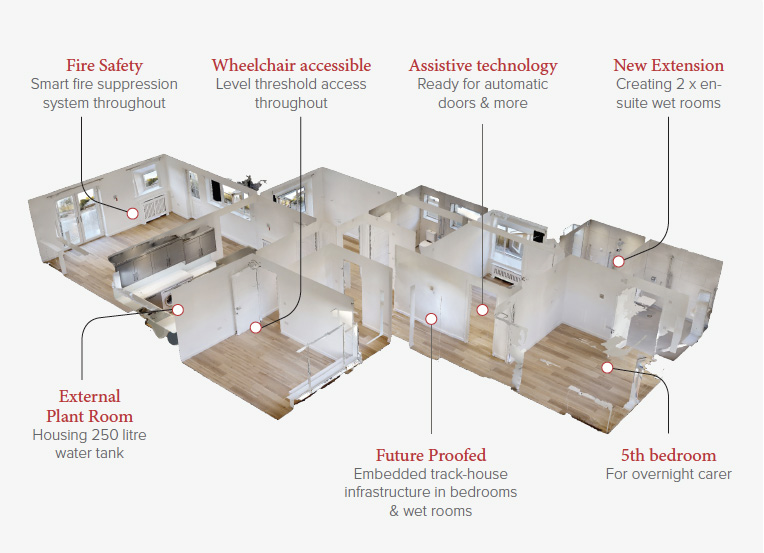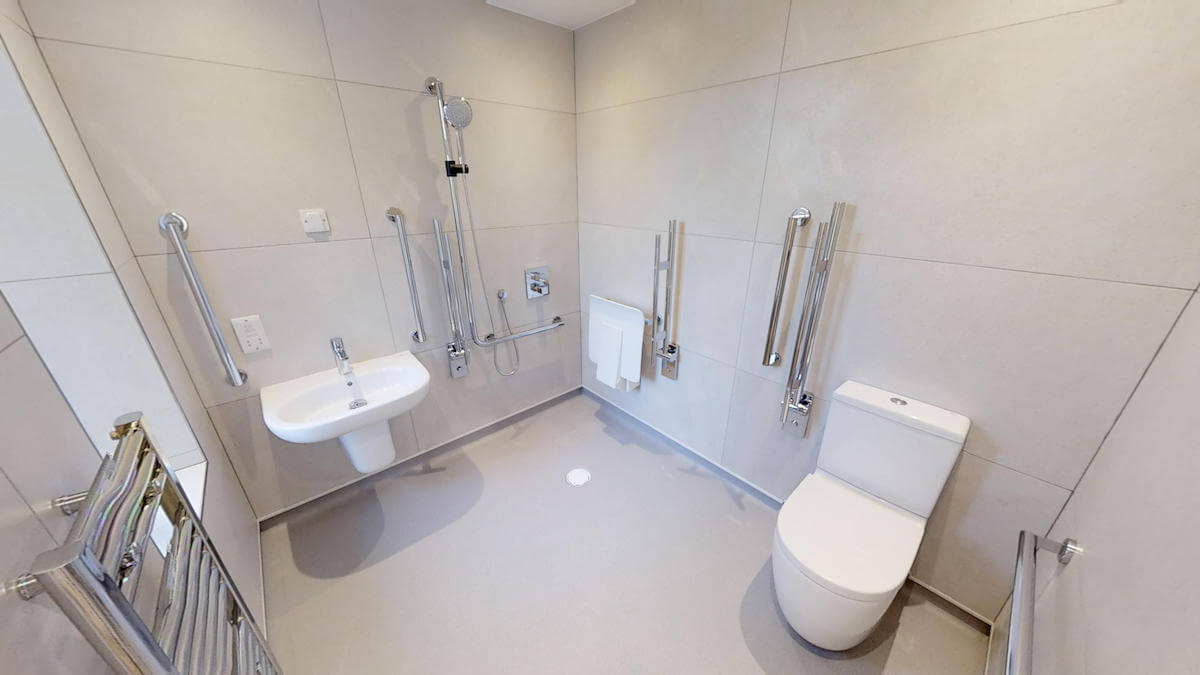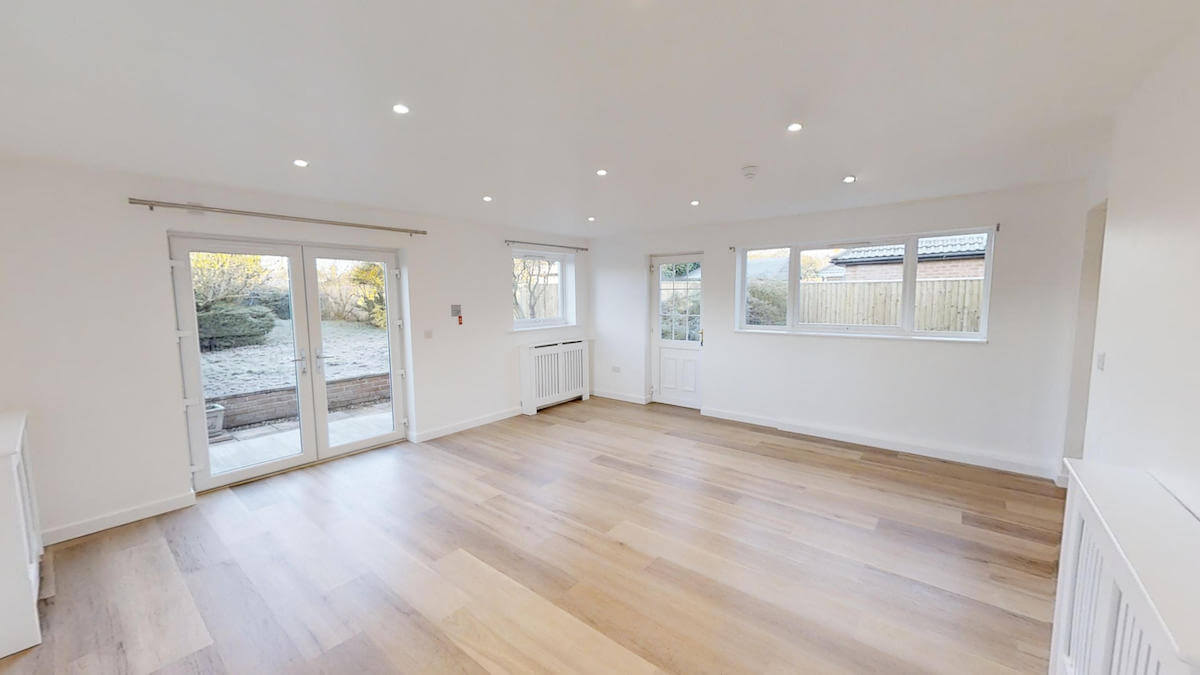
One of the unwelcome by-products of England’s experience of Covid-19 has been a lifting of the lid on the country’s social care sector, in particular regarding those living in social housing.
Kate Terroni, Chief Inspector of Adult Social Care at the Care Quality Commission (CQC) said at the start of June that there has been “a significant increase in deaths of people with a learning disability as a result of COVID-19.” It’s not yet clear why people with various disabilities have been so disproportionately affected. Can their accommodation somehow have been a contributory factor?
Social housing is defined by government as “rented housing provided by local authorities or private registered providers, known as housing associations, at sub-market rates…” Between 1981 and 2016 the stock of social housing in England fell by 25%. Yet the demand for specialist social housing (already in under-supply) is growing fast. There could be a shortfall of around 46,000 places by 2025, according to the National Housing Federation, which speaks on behalf of 800 of England’s housing associations, who collectively provide homes for around six million people.
Walls & Futures is a Real Estate Investment Trust (REIT) which is a member of the Aquis Stock Exchange’s Growth Market. Walls & Futures describes itself as an “ethical housing investor and developer” which is “on a mission to address the unfulfilled demand for specialist social housing in the UK.”
REITs have had a mixed press recently. One analyst who has looked closely at the sector points out that generally “the real estate cycle mirrors the economic one as rents and real estate values increase when GDP grows, and decline when
the economy falters.” Given that the International Monetary Fund (IMF) now projects global growth to fall by almost 5% in 2020 (but rise by 5.4% in 2021) it’s understandable that investors in REITs are nervous.
Not all REITS are the same, however: the Walls & Futures REIT has a captive and growing market, and its cash-flow is statutorily government-supported. “We are fulfilling a need where there is a statutory requirement for the government to step in”, says Walls & Futures’ CEO and founder, Joe McTaggart. “A single supported housing place – such as we provide – saves the government about £100,000 a year when compared to someone in a hospitalised setting. There is also a clinical case to be made – people in supported living have a much better quality of life,” he adds.
“We are fulfilling a need where there is a statutory requirement for the government to step in”
“We have a total target return of between 7% and 9%, of which expect around 4% will come in the form of a dividend pay-out and the rest in capital appreciation.”
The central government Transforming Care initiative – which seeks to encourage the NHS and local authorities to move people with a variety of needs from institutional settings (such as a care home) into the community, with supported living – should play into Walls & Futures’ investment case. Had more people been living in a smaller supported-living setting (such as is the case with Walls & Futures) than in such large care homes, the spread of and fatality from Covid-19 might have been considerably smaller.
“We work with our customers – local authorities, charities, housing associations – and we build and develop specialist homes which we then rent out on long leases. We call ourselves ethical and we view that as underlying our whole approach to business. Our specialist homes are better quality – far better than the lowest common denominator approach of some of our competitors,” says McTaggart. “We try to build into our properties flexibility – as people get older their needs change. We create for our customers a home which can serve the needs for more people for longer.
Our latest property for example, in Oxfordshire, has wheelchair accessibility right through the house. The people living there at the moment don’t use wheelchairs but we know in the future that if they need to, they will not need to move, which can be very upsetting for them,” adds McTaggart. He continues: “So ‘ethical’ means for us an overall approach to business; it’s not just a badge. It’s not about trying to squeeze every last ounce from the deal – it’s to make sure that our customers get everything they need.”
Why should investors consider Walls & Futures? McTaggart is clear: “we have a total target return of between 7% and 9%, of which expect around 4% will come in the form of a dividend pay-out and the rest in capital appreciation.” Over the last three years Walls & Futures has outperformed the MSCI UK Residential Index; in 2019 the index returned 4.4% and Walls & Futures 23%. “You get to invest in a growing investment fund, which has a different approach to the generality of the marketplace,” says McTaggart, who additionally points to the long-term under-spend by government in supported living.
“There is a lot of savings for the public purse by this kind of out-sourcing – savings on hospital placings and care homes. Our key difference to everybody else is that we have built really good relations and we are creating bespoke solutions for our partners.”
Why join the AQSE Growth Market? For Walls & Futures it was partly a requirement – to be classified as a REIT a company must be quoted on an approved exchange. There was also the matter of the large up-front and continuing costs of joining an alternative exchange. McTaggart explains: “the reason we chose AQSE
is that for a growth company like ours the cost of joining another exchange was prohibitive, between £300,000 and £500,000 to join and then to stay on that exchange you have a similar cost each year. We would have been able to stay on that exchange for a year or two and then all the money we would be able to raise would be spent on exchange fees. Aquis gives us everything we need while being cost-effective, while fundamentally the regulations are the same. I’m really excited about the benefits of now being part of the Aquis group.”




